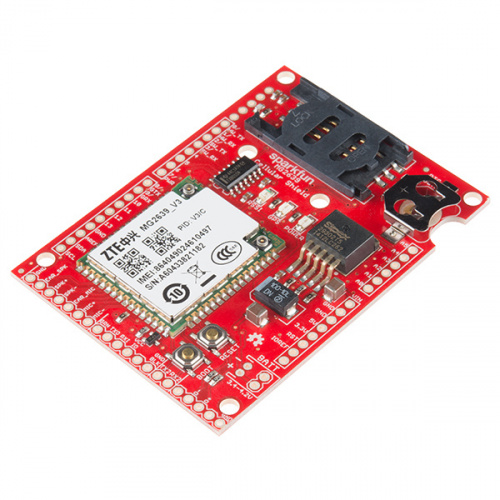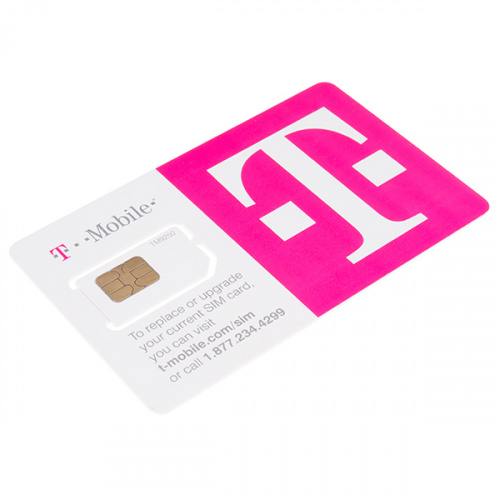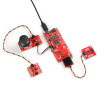Hello again. We have another non-traditional week here with new products, but we do have a few videos to check out. We also have a little teaser for something coming soon. Let's start with that.
And that's why they call it a teaser...
Remember the new multimeter (that wasn't yellow) from last week? During the filming of the New Product Post Video, I also filmed a multimeter tutorial video for anyone that wants to get a little more familiar with how they work. If you're new to electronics and working with multimeters, you might want to check it out.
But Robert, what about new products this week? Don't worry, I didn't forget about that. This week we only have one new product, but it's pretty cool. Let's see what it is!
Check it out. Your project is sitting outside, there's no WiFi, no Ethernet, but you have a cellular signal. Instead of giving up on transmitting your precious data to the Internet, or hoping for wireless remote control, you can use our new Cellular Shield. The ZTE MG2639 module, which this shield is built around, supports SMS, TCP, UDP, and can even be used to make or receive phone calls! That means you can send and receive text messages, or use it to remotely connect your Arduino to the Internet. To top it off, it has an integrated GPS receiver, to help it from getting lost. We even have an in-depth tutorial to show you how to get up and running quickly. You're gonna need a data plan to go with that board though.
The shield works perfectly with the SparkFun SIM Card. If you're not familiar with SIM card, it's a pre-paid card that gives you unlimited data for 6 months. There are no contracts, no extra fees, and unlimited (albeit throttled after 1GB) data. The 6 month time period starts from when you purchase the card and is automatically turned off at the end of 6 months. It's the easiest way to get data into your device.
Lastly, we have a throw-back video for a classic product that we felt needed a bit more attention. Check out our new demo for the classic Thermal Printer.
OK, that's all I have for this week. As always, thanks for reading, thanks for watching, and be sure to check back next week, we have a couple surprises up our sleeves. See you then.









It used to be that every Friday, I would grab my morning cup of coffee, sit at my desk, and watch the Sparkfun New Product Friday videos to see all the new widgets they were bringing this week. It was like Christmas. I learned (and wound up purchasing) a lot because of them. They drummed up interest and stirred my creative fires. I'm sad to see them go. I don't visit SFE regularly anymore, only when I need to pick up something I've run out of.
As for the PSOC 5, I have no idea what it is nor why I would want to know from that video. I'm sure it was a fun video to make, but it's wasn't informative -- unless I'm missing something, which is possible.
For conversation's sake, do the specific product demos not accomplish the same thing? Let's be honest, my demos weren't terribly polished and barely working...
I totally get the value of discrete product descriptions. Especially from a production standpoint.
It wasn't really the demos that did it for me. They were entertaining, yes, and I enjoyed them. A lot of SFE's personality and humor came through and that was great. It garnered not just customers, but fans.
What did it for me was in "discoverability". Everything I needed to know about several new product was covered in a short, single video. The videos could have been half as long, with a quarter of the production value, and they would have been just as valuable. Not only did you announce new products, you also kept us informed about product updates, revisions, and sometimes things that were just back in stock. Links to the product page did the heavy lifting. This is valuable too. I don't see you producing a video on that new LiPo that comes in a different shape, but I might need those, so how would I know?
Further, the home page is getting really loud, visually. Discrete product videos there exacerbates that and adds to the visual noise. Boxes, asides, banners, tabs, accordions, embeds, and menus (three levels of them!) hide those products rather than highlight them. Over the past two years, we went from one, clear video at the top to needing to scroll and click and view multiple times to get to the same information. Maybe that's not impacting your conversion rates, but I can't imagine it's helping.
Yeah it was the simplicity of the whole thing. One video per week, one click, sit back and watch. Too bad it became posted too late for my morning coffee in the eastern time zone. Dgerton is right that the home page has gotten too busy. I am not one of the many people who can't stand change. Yet I have to admit I miss the old way of doing it. Different hosts and settings would be fine, but a single new product post on a given morning each week would be great. Other videos could be posted on other days The multimeter video was extremely well done and I will be linking students to it. I hope it is the beginning of a new series (soldering, discrete electronics, etc). The robotics videos were OK but a bit too limited to one product line.
The new format is probably as good as the old format, but it's a change. And you know how people don't like change. It was also bad timing in that it came at the start of a very slow period for new products. Seems like it's been months now. It's not just you guys, I haven't placed a big order with any of my favorite online vendors in a quite a while. RPi and wearables seems so popular right know, but I just have zero interest in those. I don't need 10 different RPi cases, a hundred different ways to light up an RGB led, or yet another microcontroller breakout. (cough Adafruit) I used to look forward to you guys having new sensor breakouts, interesting kits, or other little electronics bits that I could build projects around. But that just hasn't been happening lately, so I've moved on to other things.
As for the cellular board, did it take longer than expected (like a year longer?) to get this one finished up and released? I'm not really sure where a $70 2G cellular shield fits into the market right now. I'm sure it works very well and it looks ok, but yeeeeah.........
Please read my blog post from earlier this week on some of the reasoning behind the changes we've made to the video process: https://www.sparkfun.com/news/1822
I am excited for the PSOC 5. I have spent the last 3 years using these. I really look forward to helping the community with these. Even willing to help out with some tutorials.
I wanted to simply voice that I appreciate Sparkfun's 'quality over quantity' approach with the last few weeks of New Product Friday. It may only be one new board, but I will take one of these over the sticker-LEDs/books posts any week. I remembered quickly to check the website today. I am sure I will remember to next Friday, with the recent quality of NPF posts.
TL;DR - Thanks for hearing us Sparkfun Team!
I really hope this Cypress–SparkFun collaboration results in the possibility of programming PSoCs without needing to use Windows to do it. I got a PSoC 4 Pioneer kit about a year ago, and haven't done anything with it other than blinking the LED, just because it's inconvenient to have to reboot into Windows to program it.
I did ask the PSoC team on reddit whether they knew of any way to program it on a Mac without using Windows (either dual-boot or virtualized) and they didn't at that time.
P.S. Isn't that a Hydra, not a Cerberus, in the thermal printer demo video?
This was my biggest problem when I looked into Cypress's stuff. Very interesting hardware, but closed source tools that were Windows only. I run Linux everywhere, except for one Windows box for gaming (and even that's changing, thanks to Steam). It's just not worth it to run Windows just to use some company's proprietary dev tools.
By the way, if you (sparkfun) want to put something powerful out there...go Xylinx Zynq7000. Dual-core ARM microcontroller + FPGA on same IC. Tons of flexibility and power: https://www.digilentinc.com/Products/Detail.cfm?Prod=ZYBO
You can even provide a sample bitstream with 'arduino' emulated on the FPGA to hook people in.
I'd be interested in helping out.
Remains to be seen which PSoC5LP they used..... I hope not the lowest-end on. I give up on buying dev kits with only the lowest-end product. Should have the highest-end product. After prototyping, you can see the actual amount of resources used and get the appropriate package. But, too small to begin with, and you are stuck.
It will be the superset part, including the most of everything currently available at the highest possible clock speed.
That's really the only way to do a dev board. You can always trim down your application to fit a smaller device, right?
Absolutely. The biggest offenders are those pushing PIC chip microcontrollers. Of course, I've been giving much opportunity trying to save a byte here and there...... (reminds me of my old favorite periodical - Dr. Dobbs Journal of Calisthenics & Orthodontia - Running Light without Over Byte).
I've been using one of those receipt printers for years in my steampunkish Haiku Generator and it's been chugging along, printing out bad and sometimes scary poetry without a problem. So I can vouch for their durability. I do suggest you tear off the output toward the back at a sharp angle and aggressively for the best results.
I've used the PSoC4, not too shabby (especially for the cost). Wouldn't really call it a full FPGA on the PSoC5, but it is nice to have some flexibility that does not involve CPU cycles. Imagine a 'microcontroller' with on-chip op-amps and configurable routing/logic to do custom tasks in parallel to the code running on your ARM processor.
I've used the PSoC4 to make a self-balancing robot: http://ohmwardbond.blogspot.com/2014/12/self-balancing-robot.html
Cool product!
+1 on Dragon88's 2G cellular comment. Are you guys working on something in 4G? or at least 3G?
If you want a real movie trailer announcer use my friend Richard Malmos. He kind of took over for Don LaFontaine.
Wow... It took SparkFun only 4 years to do a PSOC5 board. 5 years ago I did commercial products using the First Touch starter kit that had engineering samples chips. This unit survived 30 flights on a Helicopter UAV without a single reset. Now I hope you will be faster to the market with a small PSOC4 BLE board...
Thanks for watching!